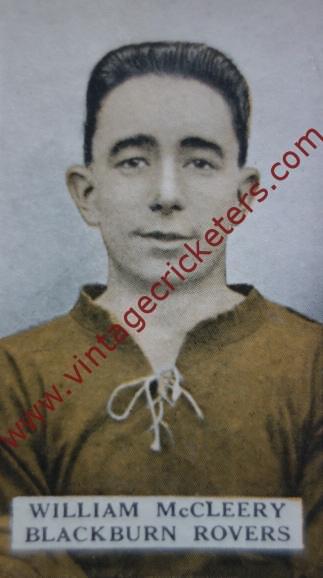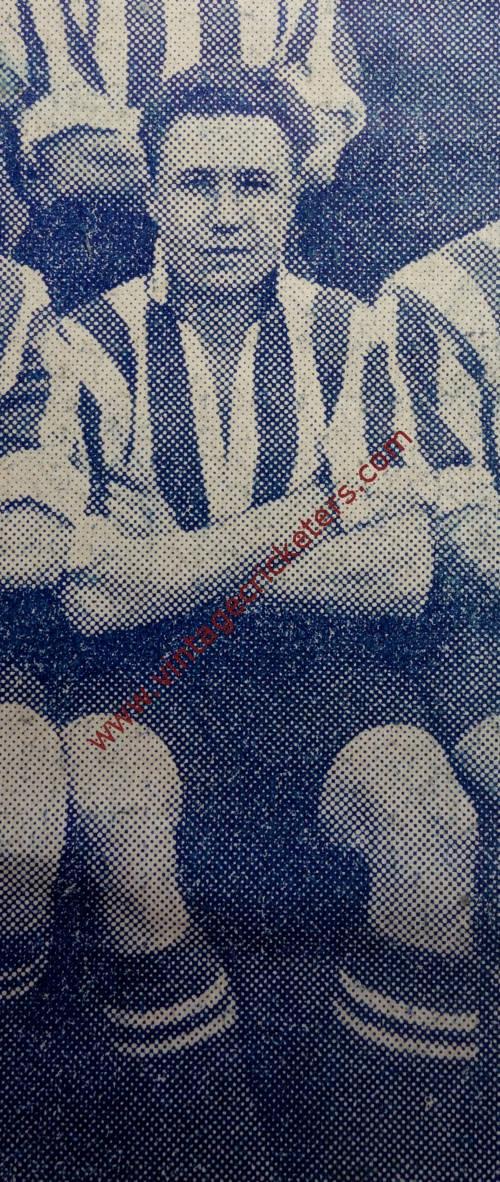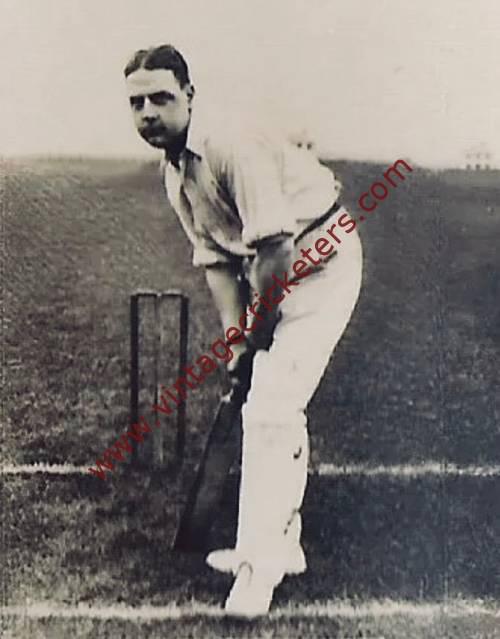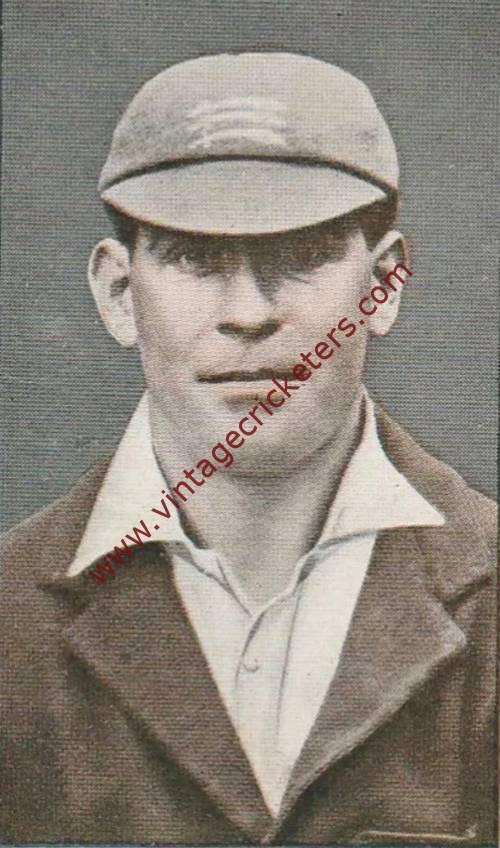Please choose your photo size from the drop down menu below.
If you wish your photo to be framed please select Yes.
Note: 16″x 20″not available in a frame.
Images can also be added to accessories. To order please follow these links
£8.95 – £49.95
Please choose your photo size from the drop down menu below.
If you wish your photo to be framed please select Yes.
Note: 16″x 20″not available in a frame.
Images can also be added to accessories. To order please follow these links
Rondebosch, Cape Town born all-rounder Harold Geoffrey Owen “Tuppy” Owen-Smith was a superb all-round athlete educated the University of Cape Town, after which he then studied medicine at Magdalen College, Oxford, on a Rhodes Scholarship, qualifying as a physician at St Mary’s Hospital Medical School. While at Oxford, he played rugby and cricket for his university.
He had already made his presence felt in Western Province’s two matches against M.C.C. in 1927-28. In the first match of the tour, bowling on a rain-damaged pitch, he took 4-43 in 14 overs with his slow leg-breaks, and the records seem to show that Hammond was his first victim in first class cricket. At the end of the tour, when M.C.C. played a return match with Western Province, Owen-Smith made 32 in the second innings. and then was selected as a member of the 1929 South African touring side. He first attracted attention in the early weeks of the 1929 tour by his magnificent fielding in the deep, and especially at cover point. He was fast and he would chase for all he was worth before unleashing a powerful, flat return to the top of the stumps. His anticipation at cover, and his ability to intercept strokes which would leave others standing, made him the star of the fine fielding side, and it is probably safe to say that only two other fielders, Colin Bland and Clive Lloyd, have caused such a stir since his day.
He made his Test match debut at Edgbaston in June 1929 making 25 in the first innings. In the Second Test at Lord’s, going in at No. 7 when his side were in danger of letting a hard-won advantage slip, he first helped Morkel add 48 for the sixth wicket and later took complete control in a last-wicket partnership of 43 with Bell. His judgement and selection of the right ball to hit made a big impression, as did his manipulation of the strike, and he was 52 not out at the close of the innings, having seen South Africa achieve lead of 20 runs. In the Third Test at Headingley, however, they conceded a lead of 102 on first innings and were only 14 runs ahead when they lost their seventh second innings wicket in the last over of the second day.
The match seemed as good as over, but next morning Owen-Smith, 27 not out overnight, and Quinn took the score to 167 before Quinn was eighth out, stumped by Duckworth off White. Now Owen-Smith went for the bowling in magnificent style and was in such command that he monopolised the strike before being out for 129, having made 102 before lunch. His stand of 103 with Bell, scored in 65 minutes, has remained a record for South Africa’s tenth wicket. So loud and prolonged was the applause while the two returned to the pavilion, they might have won the match for their side. However, England got home, thanks to Woolley, though not without some trouble.
In all first class matches on the tour Owen-Smith made 1,168 runs at 35.39 and took 30 wickets at 25.80 apiece. In Test matches he averaged 42.00 in 1929 with 252 runs to take third place in the tour averages. In addition to his hundred at Leeds he scored 126 against Warwickshire, and the editor of Wisden had no hesitation in choosing him as one of the Five Cricketers of the Year for 1930.
It is legitimate to ask why Owen-Smith’s cricket aroused so much enthusiasm. Quite apart from the exhilarating nature of his play, it was the young man himself who had such a wide appeal with his stylish play and his debonair attitude. A famous writer on the game likened him to Denis Compton more than anyone else he could think of. Like Compton, Owen-Smith was just as likely to make runs with a borrowed bat as with his own; like Compton he communicated his enjoyment of cricket to thousands.
In 1930 Owen-Smith returned to England to study medicine at Oxford, and as expected he won his Blue in all three years. In 1931, saving his best for the big occasion, he made 78 at Lord’s and bowled 71 overs for 200 runs and six wickets. His bowling had already brought him excellent analyses against Gloucestershire, Lancashire and the Club Cricket Conference. A year later he made 67 against Cambridge, a valuable effort which helped to save the follow-on, and bowled 76 overs, again taking six wickets. In his final year, with examinations impending, he played less but found the hard, dry pitches of 1933 very much to his liking. He obtained bounce as well as turn. At Lord’s he took 5-93 against Cambridge and finished fourth in the national averages.
When Owen-Smith continued his medical training at St. Mary’s Hospital in 1935, he was able to turn out for Middlesex in August, and to a lesser extent in 1936. In 1937 he played in twelve County Championship matches and took 57 wickets at 19.84, including 8-103 against Gloucestershire at Lord’s. In the Challenge Match that September between Middlesex and Yorkshire at The Oval, which the Yorkshiremen won easily, Owen-Smith made 77 in Middlesex’s first innings, the next highest score being 25. His genius with the bat also shone brightly when, playing for M.C.C. at Lord’s, he gave his old university a drubbing to the tune of a career highest 168 not out, producing a wide variety of strokes with astonishing ease. And to rub it in, he took 5-33 in Oxford’s first innings. In South Africa, he played in the Currie Cup before and after the Second World War, and at Cape Town in 1948-49, after service in the Middle East, he made 65 not out against M.C.C. in the opening match of their tour. He retired from cricket after the 1949-50 season.
In all he made 4,059 runs in first class cricket in 101 matches at an average of 26.88, with 3 centuries and 23 half centuries, while his bowling earned him 319 wickets at 23.22 apiece, with a best return of 7-153, 3 ten wicket matches and 20 five wicket innings. Quite apart from his 93 catches, he must have saved hundreds of runs by his superb fielding.
He was capped 10 times in rugby union by England from 1934 to 1937. He was captain throughout the 1937 Home Nations Championship, and he captained England three times. He is regarded as having been a fine attacking full-back and a great of the game. He also was a champion lightweight boxer gained awards in athletics whilst at Oxford University.
His son, Michael Owen-Smith, is a South African journalist who served as the media manager for Cricket South Africa from 2007 to 2010.
Vintage Cricketers was founded in July 2019. There may be more photographs of this cricketer in the Vintage Cricketers library, which are due to be loaded in due course. In the meantime, please send a message to us using the contact form at the bottom left of this page and we can arrange to prepare and publish all images of this cricketer if you have a particular interest in him.
| Weight | N/A |
|---|



